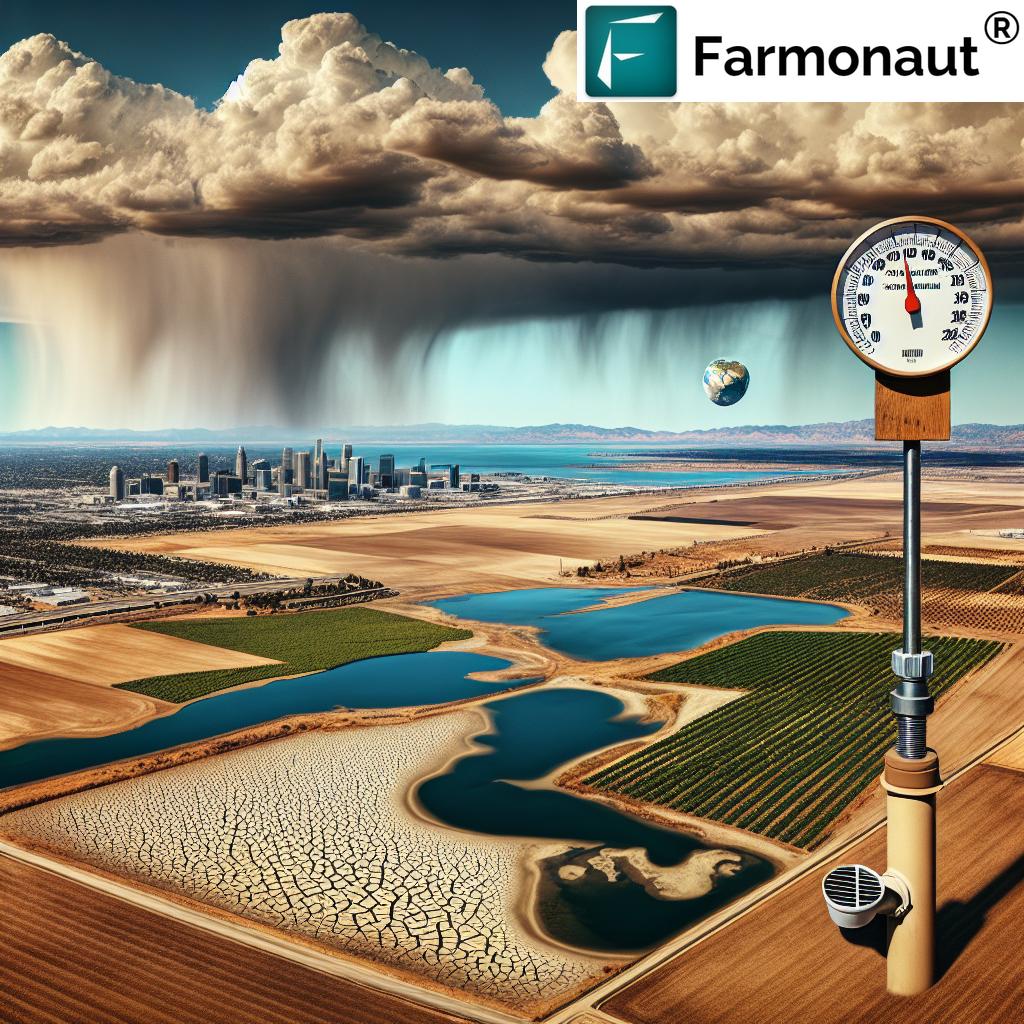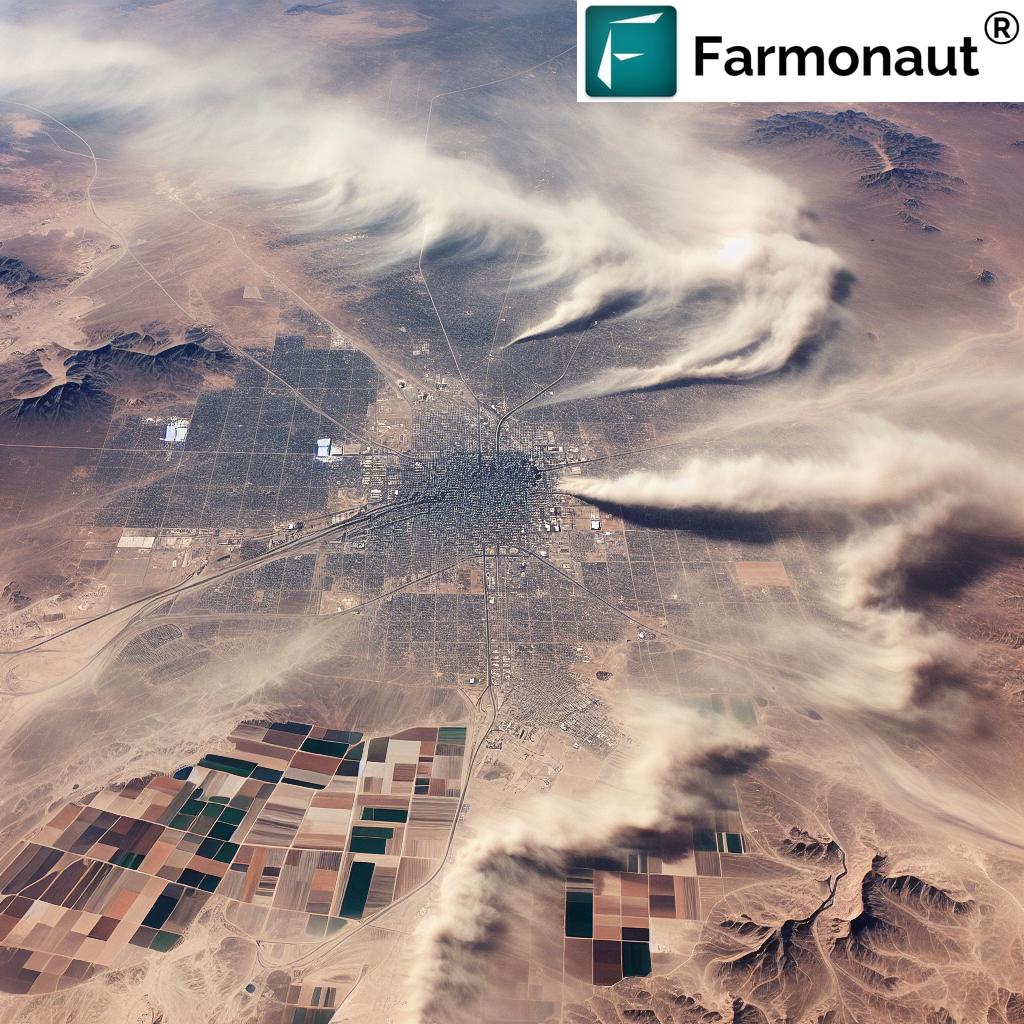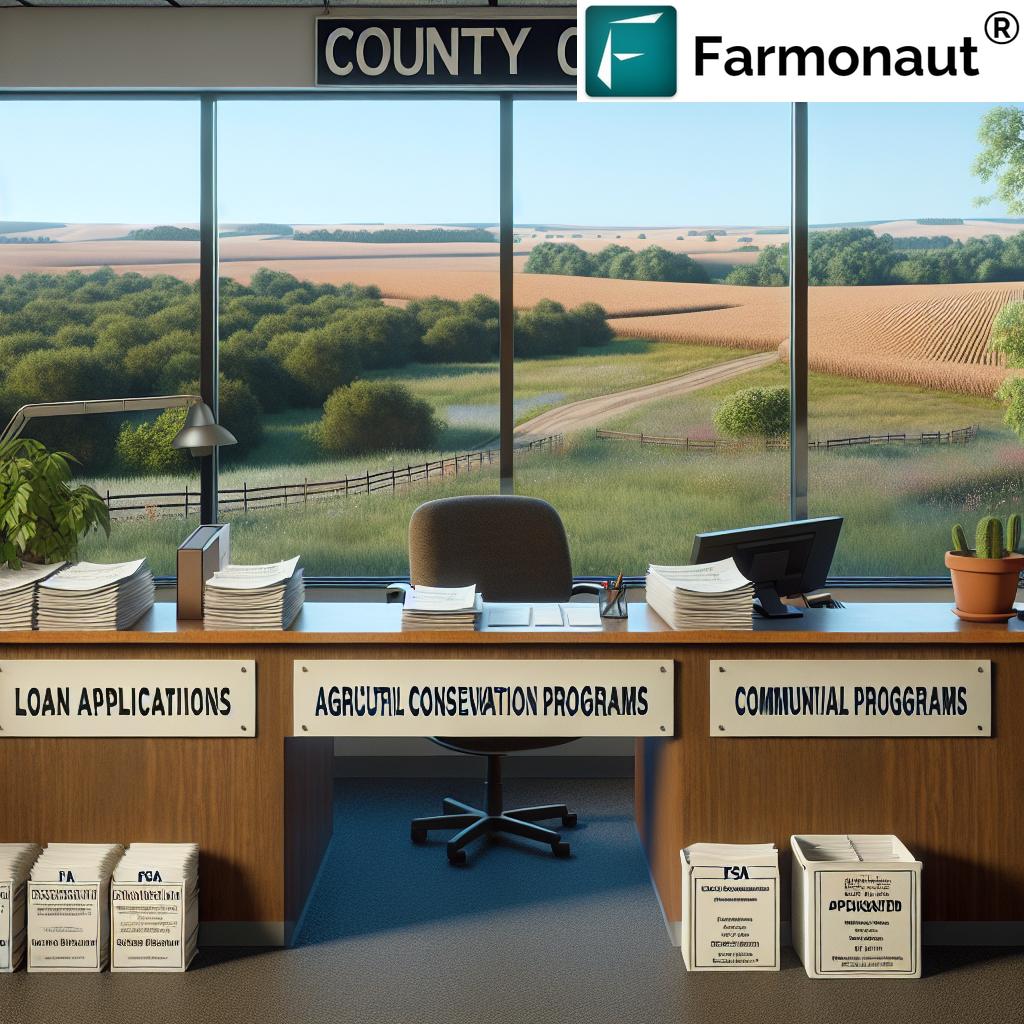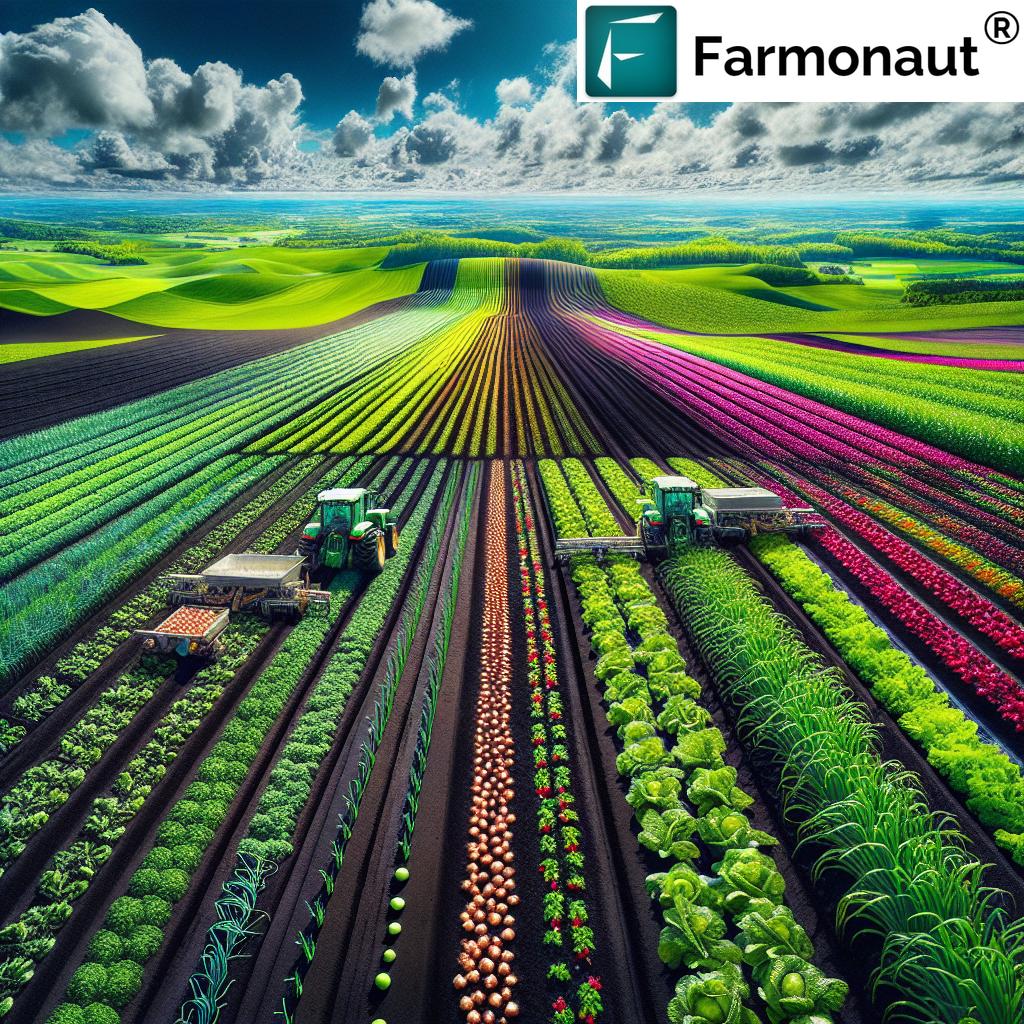Farming Technology for Restaurants: Top 2025 DC Market Trends
“DC restaurants in 2025 source over 40% of fresh produce via tech-enabled local urban farms.”
“Over $10 million in agriculture technology grants will fuel urban food supply innovations in the DC market by 2025.”
Meta Description: The evolution of farming technology for restaurants in 2025 is redefining farm-to-table in Washington DC, with drone tech, IoT, and agtech grants boosting urban sustainability.
Table of Contents
- Summary: The Evolution of Agriculture Technology and Its Impact on Farm-to-Table Restaurants in 2025
- 2025 DC Farming Technology for Restaurants – Setting the Stage
- Technology & Innovations: Urban Farming and Farming Technology for Restaurants in DC
- Drone Technology for Farming: A Quantum Leap for Local Food Supply
- IoT, AI & Data: Precision Farming Meets Urban Restaurant Needs
- The Farmers Market Restaurant DC Ecosystem: Bridging Producers and Chefs
- Agriculture Technology Grants: Catalyzing Tech Adoption in the Urban Market
- Infrastructure & Logistics: Keeping DC’s Food Fresh
- Comparative Trends Table: 2025 DC Urban Farming Tech for Restaurants
- Farmonaut: Satellite Technology Solutions for Agriculture in 2025 & Beyond
- DC Market Trends & Future Directions for Farm-to-Table Dining
- FAQ: Agriculture Technology for Restaurants in 2025
Summary: The Evolution of Agriculture Technology and Its Impact on Farm-to-Table Restaurants in 2025
The intersection of agriculture technology and the restaurant industry in 2025 is fundamentally reshaping how fresh, sustainable food reaches consumers, especially in urban centers like Washington, DC. Here, farmers markets and farm-to-table restaurants thrive. Enhanced farming technology and increased availability of agriculture technology grants are driving innovations—like advanced drone technology for farming and IoT sensors—that streamline the supply chain from farm to fork.
In this new era, precision agriculture doesn’t just boost productivity—it directly benefits restaurants, helping them source high-quality local ingredients while keeping their menus innovative, flavorful, and sustainable. As we look into the DC urban markets for 2025, this synergy is transforming everything from how crops are grown and monitored (with drones and satellite data) to how food is delivered and stored.
2025 DC Farming Technology for Restaurants – Setting the Stage
Key Facts: Farming Technology for Restaurants in Urban DC
- By 2025, over 40% of the produce used in DC’s farmers market restaurants will be tech-enabled, locally grown, providing fresher and more flavorful dishes.
- DC’s agriculture technology grants pool will surpass $10 million, accelerating tech adoption amidst small and large farms alike.
- Drone technology for farming and IoT sensors will see mainstream use, with multispectral cameras helping farmers target interventions and minimize chemical usage.
- Modernized logistics and cold storage infrastructure will ensure produce retains freshness from farm to table across urban markets like Washington, DC.
Urban Restaurants & Farms: A Dynamic 2025 Partnership
In Washington, DC, restaurants and farms form a critical pipeline for the local food supply. Trends highlight:
- Diversity and traceability: Menus increasingly feature ingredients that are organically grown, traceable, and seasonal.
- Restaurant supply chains are being reshaped by technology adoption, enhancing freshness and sustainability across the board.
- Carbon footprint tracking: New digital solutions, like those from Farmonaut, allow urban restaurants and farms to measure and reduce their environmental impact.
Technology & Innovations: Urban Farming and Farming Technology for Restaurants in DC
What Makes Technology Essential for Modern DC Restaurants?

- Precision: Sensors, satellite imagery, and drone tech enable precise monitoring of soil conditions, irrigation, and crop health.
- Efficiency: Smart data use reduces waste and resource expenditure, optimizing yields and freshness for the restaurant industry.
- Sustainability: Modern farming technology supports eco-friendly practices, lowering carbon footprint and ensuring long-term food security.
The evolution of agriculture technology for restaurants in 2025 is shaped by the need to meet consumer demand for fresh, locally sourced, and sustainably grown produce—critical factors for competitive farmers market restaurant DC operations.
Key Innovations & Their Urban Restaurant Applications
- Satellite imaging (e.g., Farmonaut’s solutions): Track crop health, identify pest infestations, and monitor large plots with unprecedented speed and accuracy. Satellite imagery equips local farmers with data on NVDI (vegetation health), soil moisture, and resource management.
- Blockchain-based traceability: Ensure every ingredient is traceable from seed to plate, supporting consumer trust and regulatory compliance. Learn about blockchain product traceability here.
- AI-powered advisory tools: Optimize planting, watering, and harvesting schedules, based on aggregated climate and soil data.
- Environmental tracking: New tools (like Farmonaut’s) help monitor carbon emissions and reduce environmental impacts. See carbon footprinting solutions for more.
How AI Drones Are Saving Farms & Millions in 2025 ? | Game-Changing AgriTech You Must See!
Drone Technology for Farming: A Quantum Leap for Local Food Supply
How Drone Technology for Farming Supports DC Restaurants in 2025
DC’s diverse culinary scene depends on high standards of quality and freshness. Drone technology for farming exemplifies the transformation shaking up local agriculture and farm-to-table restaurants. Key benefits:
- Monitor large farm plots quickly & accurately: Drones equipped with multispectral cameras, thermal sensors, and AI analytics capture frequent overhead images to assess crop health and detect pest or disease outbreaks immediately.
- Targeted interventions: Spot-treating affected zones rather than spraying entire fields, which reduces widespread chemical applications and protects nearby urban environments.
- Efficient resource utilization: Drones help conserve valuable resources like water, energy, and fertilizers, improving the sustainability profile of any urban farm or farmers market supplier.
- Traceable, high-quality, healthier crops: Enhanced monitoring translates to consistent supply of ingredients that meet rigourous standards demanded by DC’s chefs.
With the increased availability of agriculture technology grants, both small urban farms and larger peri-urban producers can now adopt drone technologies at scale, driving a wave of modernization across the local food supply chain.
Regenerative Agriculture 2025 ? Carbon Farming, Soil Health & Climate-Smart Solutions | Farmonaut
Drone Technology in Action: From Soil Health to Harvest
A typical use scenario in DC urban farms:
- A farmer launches a drone flight over small vegetable plots near downtown.
- Multispectral cameras map plant stress, while sensors detect subtle soil moisture shifts.
- Real-time data identify where irrigation or organic pest management is needed.
- The result: targeted response, leading to higher yields without compromising on sustainability or flavor.
IoT, AI & Data: Precision Farming Meets Urban Restaurant Needs
Smart Sensors, IoT & Data: How Technology Powers Next-Gen Agriculture Technology for Restaurants
- Soil condition sensors: Real-time readings of pH, nutrient levels, and moisture enable farmers to customize fertilizer and irrigation schedules — cutting water use and optimizing crop quality.
- Temperature & humidity monitoring: For storage and logistics, IoT devices ensure harvested produce remains at peak freshness out to the city’s best restaurants.
- Data analytics: Using AI platforms, like those offered by Farmonaut, enables predictive planning: knowing which crops will be ready when, and which plots need attention first.
Benefits for Chefs & Restaurant Managers
- Consistent ingredient supply, traceability, and predictable quality—thanks to detailed crop and logistics data.
- Traceability: From seed to plate, digital records powered by blockchain and IoT ensure accountability. Check out Farmonaut’s Product Traceability highlight.
- Menu flexibility: Access to fresher, seasonal produce enables rapid menu innovations that meet consumer trends across Washington, DC.
California Wine 2025 ? Sustainable Viticulture, Organic & Biodynamic, Precision AgTech
IoT, AI & Blockchain Apps for 2025 DC Restaurants
 Farmonaut Web App: Real-time precision monitoring for farmers and restaurant suppliers—seamless, accessible, and affordable analytics in one dashboard.
Farmonaut Web App: Real-time precision monitoring for farmers and restaurant suppliers—seamless, accessible, and affordable analytics in one dashboard.- Farmonaut Satellite & Weather API: Plug satellite and sensor insights directly into existing farm management tools for real-time data-driven decisions.
- API Developer Documentation: For deeper integrations for DC-based farms, markets, and advanced restaurants wanting to automate resource management.
Mobile Adoption for On-the-Go Urban Farmers & Market Managers
Download Farmonaut’s mobile apps (Android & iOS) for satellite-powered insights, crop monitoring, and advisory—wherever you are in DC.
10 Low-Investment, High-Profit Agri Business Ideas in 2025
The Farmers Market Restaurant DC Ecosystem: Bridging Producers and Chefs
Critical Nodes: Farmers Market Restaurant DC Synergy
The integration of advanced technology in DC’s bustling farmers markets is reshaping the city’s farm-to-table reputation:
- Freshness and Traceability: Restaurants can now verify the journey of every ingredient, from local urban farms to kitchen delivery, thanks to IoT and blockchain records.
- Direct producer-restaurant links: Tech-powered marketplaces and communication apps eliminate intermediaries, so chefs and farmers collaborate directly, improving menu planning and ingredient quality.
- Consistent Brand Commitment: DC restaurants are known for their diversity and commitment to sourcing local, sustainable produce—the backbone of “fresh first” menus that patrons love.
Why DC Chefs Prefer Tech-Enabled Urban Farms
- Ability to meet standards demanded by the city’s most respected culinary professionals; everything is organically grown, traceable, and reliably flavorful.
- Integration of sourced produce into unique, seasonally rotating menus.
- Support for local economies, boosting revenues for both small and larger farms and keeping the urban restaurant scene vibrant.
Agriculture Technology Grants: Catalyzing Tech Adoption in the Urban Market

By 2025, the DC metropolitan market is expected to distribute over $10 million in agriculture technology grants.
Here’s how these grants catalyze innovation:
- Lower Barriers to Tech Adoption: From drones and IoT sensors to precision irrigation systems, financial support brings next-gen farming tech within reach of small, locally-focused DC farms.
- Enhanced Data Connectivity: Farms use grant funds to purchase AI-powered advisory software and invest in satellite monitoring (see Farmonaut’s Large-Scale Farm Management Solution) to better predict, plan, and improve crop quality for restaurant demands.
- Support Sustainability and Carbon Reduction: Funds incentivize investment in green infrastructure and climate-smart farming—everything from carbon footprinting to renewable energy for cold storage units.
Smart Investments for Long-Term Benefits
- Producers receive training on best practices for equipment, technology integration, and digital recordkeeping.
- Restaurants indirectly benefit from a broader, more reliable supply of high-grade local produce at competitive prices.
- Crop loan and insurance services also rely on satellite-based verification, improving farmers’ access to financing and reducing risks for lenders.
Farmonaut Web System Tutorial: Monitor Crops via Satellite & AI
Infrastructure & Logistics: Keeping DC’s Food Fresh
Smart Cold Storage, Logistics, and Food Freshness in Urban Restaurants
The rippling impact of agricultural technology extends far beyond the field. Smart infrastructure and logistics form the missing link in delivering freshness from farm to fork, supporting restaurant industry efficiency.
- IoT-equipped cold storage: Sensors monitor temperature, humidity, and gas levels to prevent spoilage—maintaining the nutritional quality of market-fresh produce for DC restaurants.
- Advanced logistics platforms: Coordinate harvest and delivery schedules based on AI forecasts to ensure peak freshness. Delays and waste are minimized.
- Fleet management technology: Digital tools, like Farmonaut’s Fleet Management solution, optimize delivery routes, fleet safety, and vehicle usage—slashing operational costs for urban food supply chains.
Farmonaut® | Making Farming Better With Satellite Data
End-to-End Traceability and Resource Optimization
- Blockchain technology: Provides certified records for each batch from urban farm to restaurant’s cold store.
- Digital inventory systems: Support DC market managers and restaurant buyers with real-time, traceable inventory data to cut losses and maintain peak ingredient quality.
Comparative Trends Table: 2025 DC Urban Farming Tech for Restaurants
| Technology Type | Estimated 2025 Adoption Rate in DC Restaurants (%) | Impact on Local Food Supply | Notable Restaurant Use Cases | Estimated Grant Funding Availability (USD) |
|---|---|---|---|---|
| Drone Technology for Farming | 42 | Accurate monitoring, rapid response, higher crop quality, sustainability | DC farm-to-table suppliers, rooftop urban gardens, organic microgreens | $2,700,000 |
| Vertical Farming Systems | 31 | Year-round consistency, ultra-fresh produce, low carbon footprint | Hyperlocal salad bars, chef-driven tasting menus, micro-climate crops | $1,400,000 |
| IoT & Precision Sensors | 58 | Yield optimization, water/fertilizer efficiency, traceability | Market suppliers, hydroponic farms, storage site monitoring | $2,100,000 |
| AI & Predictive Data Platforms | 44 | Crop planning, weather-adaptive schedules, demand forecasting | Menu planners, farm managers, local supply chain coordinators | $900,000 |
| Cold Storage Infrastructure (Smart) | 64 | Max freshness, reduced spoilage, nutrient preservation | Seafood & produce first-tier restaurants, urban caterers | $1,250,000 |
| Blockchain Traceability & Food Safety | 34 | Ingredient validation, regulatory compliance, trust-building | Premium/Ethical dining, health-forward chains | $740,000 |
Farmonaut | Meeting With Indiaspora and Consulate General of India, San Francisco
Farmonaut: Satellite Technology Solutions for Agriculture in 2025 & Beyond
Our Role in Powering Precision, Freshness, and Transparency
As a satellite technology company, Farmonaut is committed to making data-driven insights and real-time monitoring accessible and affordable for agriculture, infrastructure, and logistics sector users in Washington, DC and globally.
- Satellite-based crop monitoring: We use multispectral satellite images to monitor crop health, soil moisture, and vegetative stress—our tools provide actionable information to support sustainable and efficient farming for urban and peri-urban DC markets.
- AI Advisory & Remote Sensing: We deliver hyperlocal advice on planting, harvesting, and resource management, directly impacting yield quantity and quality—crucial for restaurants sourcing local ingredients.
- Blockchain-based traceability: We offer secure, tamper-proof records for every supply chain transaction, helping DC’s farms and restaurants maintain transparency and consumer trust.
- Fleet & resource management: Our platform lets users optimize logistics, reduce operational costs, and guarantee on-time delivery throughout the local food supply chain.
Learn more about carbon footprinting, blockchain traceability solutions, and satellite-based crop loan/insurance services provided by Farmonaut for agriculture in Washington, DC, and beyond.
Farmonaut: Cultivating Innovation in Agriculture | Year in Review 2023
DC Market Trends & Future Directions for Farm-to-Table Dining

Increased technology adoption is not just a trend, but a necessary evolution for Washington, DC’s urban dining scene:
-
Farmers market restaurant DC operations will increasingly depend on precision agriculture and traceable logistics
- Agriculture technology grants will reduce barriers to adoption—supporting supply chain resilience during times of climate volatility, labor shortages, and new food regulations.
- Smart infrastructure and logistics will underpin the fast, fresh, and reliable supply expected by the city’s leading restaurants.
- As urban DC markets expand, new vertical and rooftop farms, hydroponic systems, and distributed micro-farms will emerge, empowered by satellite, drone, and IoT integration.
Action Steps for Restaurants and Farms in 2025
- Adopt digital tools for farm management, crop monitoring, and logistics optimization.
- Explore traceability solutions to ensure transparency from farm to fork: see Farmonaut’s product traceability offerings.
- Apply for agriculture technology grants—both public and private—to scale technology adoption and grow your market share in the competitive DC ecosystem.
- Attend workshops, webinars, and market events to network within the evolving technology-driven agriculture and restaurant space.
FAQ: Agriculture Technology for Restaurants in 2025
Q1: What is the most impactful farming technology for restaurants in Washington, DC in 2025?
A: The main drivers are drone technology for farming, IoT sensors for precision agriculture, and blockchain-based traceability. These technologies ensure fresher, higher-quality, and traceable local produce for restaurants while reducing the carbon footprint and operational inefficiencies.
Q2: How do agriculture technology grants help small DC urban farms?
A: Agriculture technology grants provide crucial funding for small and midsize urban farms to invest in next-generation tech (like drones, sensors, or digital monitoring platforms), helping them improve yields, reduce environmental impact, and secure restaurant supply contracts.
Q3: Why is traceability important for DC’s restaurant industry?
A: Traceability builds consumer trust, ensures ingredient quality, supports food safety, and meets the growing demand for sustainable, locally grown food. Blockchain-powered records are key, as used in Farmonaut’s traceability solutions.
Q4: What app or platform is best for precision farming and food supply chain monitoring?
A: Farmonaut offers a comprehensive cross-platform solution (Web, Android, iOS & API) that empowers real-time satellite crop monitoring, AI advisory insights, and blockchain-based traceability—ideal for urban farmers, restaurants, and logistics managers, especially in DC.
Q5: How does smart logistics infrastructure improve farmers market restaurant DC operations?
A: Advanced infrastructure and fleet management ensure just-in-time deliveries, preserve produce freshness, and reduce both costs and carbon emissions—pivotal for sustainable, traceable, and high-quality food supply in Washington, DC.
Conclusion
The evolution of farming technology for restaurants—centered on drone technology for farming, IoT sensors, and agriculture technology grants—will define how DC and other urban markets source, trace, and deliver sustainable food in 2025. As the intersection between technology and culinary artistry deepens, restaurants, farmers, and technology companies like Farmonaut are collaboratively building a more resilient, productive, and environmentally conscious supply chain—one plate at a time.
If you’re a DC-based farm, market manager, or restaurant—now is the time to embrace data-driven, satellite-powered, and sustainably-focused technology solutions to thrive in the decade ahead.

Get Started with Farmonaut’s Satellite-Powered Agriculture Insights













